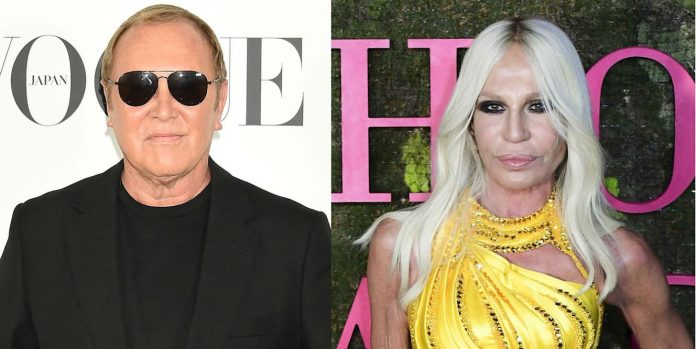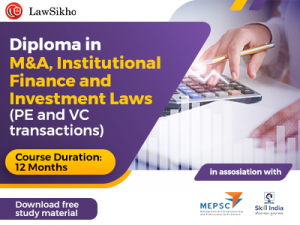
This article has been written by Aswathy, pursuing the Diploma Programme in M&A, Institutional Finance, and Investment Laws (PE and VC transactions) from LawSikho.
Table of Contents
Introduction
The acquisition of Versace by Michael Kors in 2018 was a deal in the fashion industry that raised eyebrows and faced mixed reactions especially from the fans of Versace, a brand that is synonymous with luxury, glamour, and high fashion. Despite its lack of experience in the luxury sector, American fashion brand Michael Kors decided to enter the luxury market by acquiring the Italian fashion house Versace. What were a fashion brand with an all-American style and mass appeal doing, acquiring a brand like Versace? Despite it being a risky move, it could be one that can pay off in the long run for Michael Kors. Let us understand why.
Context to the deal
Industry disruption is often associated with old companies disappearing completely by getting replaced by new ones. However, this does not seem to be the case in the luxury sector, as can be observed in the Michael Kors Versace alliance. As smaller luxury fashion houses struggle to survive by themselves, there has been an increasing trend of huge conglomerates like Kering and LVMH (Louis Vuitton Moet Hennessy) acquiring such smaller brands and growing themselves into big players in the global luxury market. Michael Kors seems to be following suit with similar ambitions for themselves. Michael Kors, whose namesake label is best known for its leather handbags, is a global brand that brings high-end American fashion to more than a hundred countries around the world. On the other hand, Versace, founded by one of the most innovative fashion designers Gianni Versace, belongs to the opposite polar of the fashion landscape and is known for its ultra-glamorous and bold apparel and accessories which caters to an exclusive high-end market.
If one were to analyze the global fashion industry, it is dominated by European fashion conglomerates like Kering and LVMH. With centuries of history of being known as the epicenter of luxury goods, Paris and Italy continue to house leading fashion brands and thus keep Europe at the top of the industry. This being the case, American companies seem to be attempting to enter this industry and catch up with their European counterparts. As for Michael Kors, this deal shall prove to be a milestone in their expansion plans in order to position themselves as a luxury brands group in the global luxury market.
Size of the deal
At the time of the deal, the global luxury apparel market was valued at around $66 billion, and the deal itself was for $2.2 billion. Prior to the acquisition, Versace was jointly owned by the U.S private equity firm Blackstone, which had bought 20% of the company in 2014, and the Versace family through its holding company Givi Holdings. Gianni’s sister Donatella Versace held a 16% stake, her daughter Allegra Versace held a 40% stake and Gianni’s older brother Santo held a 24% stake. Versace also had many other prospective buyers lined up for them such as the Paris-based conglomerate Kering. However, the interested parties considered the price put forth as too big of an ask and hence did not want to pursue the ‘overpriced’ takeover. It could also be observed that investors of Michael Kors were themselves doubtful about the acquisition as the price of Michael Kors shares had fallen over 8% as soon as details of the deal with Versace became public information.
Michael Kors Holdings Limited however went ahead with the acquisition and in furtherance of the same, agreed to buy all of Versace’s outstanding shares for the total enterprise value of $2.2 billion. This amount was to be funded in cash, debt, and shares in Michael Kors Holdings Limited, which was renamed Capri Holdings Limited post the acquisition. The Versace family had, in turn, received shares in Capri Holdings Limited equivalent to $183 million in the form of purchase consideration. Further, as part of the deal, Blackstone who was a joint owner of Versace fully exited its investment with the fashion house.
Purpose of the deal
At the outset, acquiring an esteemed Italian brand like Versace at a price that the market experts opined to be “overpriced” evidently points towards the group’s relentless and bold move towards building a fashion empire. This Versace deal is a successor of the group’s past acquisition of the stiletto-heel maker Jimmy Choo in 2017 in a $1.2 billion deal. Hence it is no secret that the present deal is in line with the group’s aspiration to become a one-stop shop for a variety of luxury brands. This move shall also enable Michael Kors to reach out to the global high-spending customer market.
Moreover, post-acquisition the group will have an increased global presence, especially in European and Asian markets. This will act as the necessary precursor for Michael Kors to be able to establish itself as a global luxury group. The acquisition shall enable the group to diversify its existing geographical portfolio from 66% in the Americas to 57% Americas, 23% in Europe to 24%, and 11% to 19% in Asia. As part of its expansion plans for Versace, the group plans to increase its retail presence from 200 to 300 stores worldwide, boost its e-commerce business, as well as raise high-margin accessories and footwear sales to 60% from the existing 35%. Through this strategy, the group aims to grow Versace’s annual revenue from the existing $850 million to over $2 billion a year. This will further aid the group’s own long-term goal to raise its annual revenue to $8 billion.
What’s more, the very act of the group rebranding itself as Capri Holdings seems to be reflective of the group’s focus on luxury and glamour. The name Capri is itself drawn from the Italian resort island of the same name that has long been recognized as a glamorous and iconic luxury holiday destination. This icing on the cake makes it abundantly clear to the world the group’s ambition to identify itself as a global fashion luxury group.
Strategic analysis
From the above-projected figures and plans, one can observe that the group has strategically positioned itself in a way that enables them to attain the global presence it desires. However, the acquisition is not without challenges. There are substantial risks involved for both parties to the deal. Premium prices in acquisitions are usually justified by cost-saving synergies that will materialize post the deal. However, there has not been any mention of cost efficiencies from the acquirer in the present case. In fact, Kors will have to invest in Versace’s growth in order to execute the brand’s expansion plans. Although Michael Kors has a highly successful e-comm presence and great social media strategies which help them reach out to the millennial audience, Versace lags far behind on this front.
Statistics have shown that users were almost twice as engaged on the Michael Kors e-commerce website in comparison to Versace’s, and Versace’s luxury price point acted as a deterrent when it came to attracting millennial customers. Although the group plans to change this by shifting the focus towards Versace’s fashion accessories and footwear line which are more affordably priced, this move may hurt the value of the brand itself and may also adversely affect the group’s original attempt to establish itself alongside high-value luxury groups like LVMH.
Versace is not risk-free either. Considering the fact that Michael Kors group operates in a completely different market, they do not have much experience in luxury brand management and therefore, Versace, by agreeing to this deal, is exposing itself to a very real risk of brand dilution. As for Capri Holdings Group, learning how to manage a luxury brand may pose another challenge.
Conclusion
Although not risk-free, this deal will definitely take Michael Kors a big step closer to their long-term destination. Acquiring brands like Jimmy Choo and Versace will also provide them with an edge over their American peers and help them in combating fierce competition posed by online retail businesses as well as fast fashion brands. It will also without doubt help them in capitalizing on international markets.
In conclusion, the fashion industry has in the past decade witnessed a lot of dramatic changes due to the increased M&A activity. These deals have enabled companies and brands to increase their global market share, diversify their product line and increase their customer reach through better online and offline presence. The trend of smaller luxury brands joining luxury fashion behemoths seems to be one that is here to stay and if all goes well, it certainly looks like consumers worldwide stand to gain from such business consolidation in the global fashion industry.
References
Students of Lawsikho courses regularly produce writing assignments and work on practical exercises as a part of their coursework and develop themselves in real-life practical skills.
LawSikho has created a telegram group for exchanging legal knowledge, referrals, and various opportunities. You can click on this link and join:










